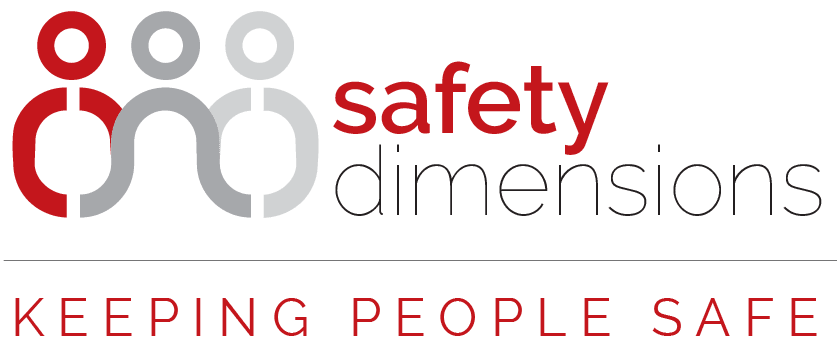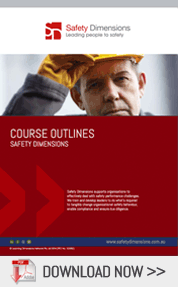
Our Work With The Water Industry
Safety Dimensions has extensive experience working with the Australian Water Industry and its partners, service providers and specialist contractors. From major metropolitan water corporations, through to smaller regional water corporations and construction, waste management and engineering companies; we understand the unique challenges associated with working in this, often complex, and diverse work environment.
Safety Dimensions specialises in the design and implementation of Safety Leadership, Behavioral Based Safety and Cultural Change initiatives in the water industry. We work with our clients diagnose the gap, and develop highly customised solutions that are proven to achieve sustained (safety) cultural change. We help you to ensure frontline leaders take personal ownership of safety, are proactive in addressing unsafe behaviours and lead by example.
We have implemented a safety leadership program for an organisation who built two multi-billion dollar desalination plants over three years. Their training and commitment to safety resulted in no major injuries and low lag indicators.
Furthermore, we work with you to help frontline workers understand that safety is as everyone’s responsibility, not simply that of the safety team or supervisors. Our success speaks for itself and we invite you to speak with our clients who will testify to effectiveness of our approach. Our clients have seen dramatic improvements within their organisations, not only in terms of safety performance, but also employee engagement, reporting, communication and more.
We are proud of the many alliances, joint ventures and partners in this industry that have invested in their safety performance, with over 5,000 leaders in this industry having attended our programs.
Safety Dimensions co-presented
at the VicWater Annual Conference 2015 with Melbourne Water.
Read more >>

Focus On Water: Seqwater Interview Joseph Meissner
Creating a safe work environment for employees is a priority for Seqwater, aiming for a safety culture where all employees are responsible for safety and are empowered to make safer decisions.
Safety Dimensions were engaged to run a one day masterclass for all leaders, and then rolled out accredited Safety Leadership Foundation Programs.
In this interview with Joseph Meissner from Seqwater, we dive into the challenges of managing the safety of their staff and explore the outcomes of their safety programs.
With workers deployed over such a large area of Queensland, what challenges do Seqwater encounter and what are the specific WHS challenges you are working to mitigate?
Seqwater is the Queensland Government statutory authority responsible for ensuring a safe, secure and reliable bulk drinking water supply for more than three million people across south-east Queensland. We also provide essential flood mitigation and irrigation services to around 1,200 rural customers in seven water supply schemes, and manage recreational areas visited by more than two million people a year and have a $10.8 billion dollar asset portfolio.
Our areas of responsibility range from north to Gympie, as far south as the tweed and to the base of the Toowoomba ranges and we have a staff base of approximately 700. With all of these diverse assets and regionally located infrastructure, reaching our people’ has always been a great challenge; to do this effectively we have had to take on a multi-faceted media approach. Some of our sites don’t even have computer access so we needed to ensure that when we got the attention of our workers, that we were able to get our key messages across in short sharp and consistent way.
We developed a new look safety brand and styling, so now anything WHS related is instantly recognisable, and we have found that workers were far more likely to read it if it stood out as a safety message, we invested in an integrated messaging board system (plasma screens) through our key hub sites (larger sites) and we ensured that our WHS notice boards were kept fresh and alive’ without the years of cluttered posters that you can sometimes see in workplaces. We developed a new look intranet site, with a one-stop-shop of support and we timed key messaging in emails when we knew that employees that only frequent a computer to do their timesheets, would be able to read it as soon as they logged on. Importantly we ensured that our senior management and CEO talked the talk’ and spoke the consistent WHS language and current messaging at regional roadshows and meetings etc. Our cut-through to frontline staff has improved, but this will always be an area of continuous improvement for a regionally diverse business such as Seqwater, however in an age of increasing mobile technology, we are hoping to be able to get more real-time information to and from our staff.
Why did you engage Safety Dimensions to assist you on your journey?
We were looking for a company with a mix of the right behavioural science background with a demonstrated real-world workplace cultural change management experience. From our initial engagement of Safety Dimensions, through to our most recent project (Safety Leadership development with the inclusion of neuroscience brain mapping), we have been more than pleased with the support, guidance, adaptability and innovation that Safety Dimensions has brought to the table.
How would you describe the WHS culture changes you have begun to see since you started your improvement journey?
Seqwater has realised quantum shifts in its safety culture and behaviour, not only that, we have seen a remarkable decrease in injuries to our staff, but the overall speak up’ and reporting culture is probably one of our strongest traits. It is from our commitment to mentor staff as opposed to policing them that has brought all workers along on the safety journey with us. Safety has seemed to defy the tips and troughs’ in overall cultural trends from our various staff surveys and remain one of our strongest indicators that our staff actively see, feel and believe in.
What specific examples of positive change can you share that relate to the way safety performance has improved – at a senior (exec level), at a middle management/coordinator level, and at a frontline level?
Apart from achieving and exceeding all expectations on our WHS KPI’s, we are seeing a real difference in our return to work and rehabilitation of staff, our frontline leaders now know what are the right questions to ask to support staff and to check in on them and we have provided them with the right tools to do this. Our Safety Walks program has also enabled our senior leaders (GMs have to do a Safety Walk once per month, and all other senior managers one per quarter) to be able to get out and talk to our workers about the challenges they face and importantly the successes that they have achieved in their work environment. This program, that has occurred off of the back of the recent Safety Leadership program from Safety Dimensions, has been a real turning point for staff to see that the senior management team are interested in their safety and are open and available to feedback.
What has the feedback been from your staff, clients and contractors on the new way Seqwater works as a result of the increased focus on education/expectations around WHS performance?
As stated previously our safety performance is the highest scoring element of our annual all staff survey (which also has pulse surveys through the year), staff can now see that when we discuss safety or are performing a task, that safety is a core element of our business, I specifically wanted a that’s just how we do it here’ mantra, where doing things safely or considering safety at all times is just the norm’. It has also been refreshing to hear feedback from new-joiners, and words to the effect of wow, Seqwater are really serious about safety hey and it’s wonderful to see a business take safety so seriously and who supports the health and wellbeing of staff so well.
What’s next on your safety journey?
Where to from here, well we now need to move into a stage of continuous improvement of our WHS Management System, continuously ensuring that it meets the needs of our workers and never becomes disconnected or impractical to use. We are looking to embed our new Safety Leadership program into our Training Needs Analysis to make it an ongoing part of our leader development program. We are always searching to find new ways to get that contact time with our frontline workers to ensure that they know about our initiatives and understand what’s happening in safety at Seqwater. And to continue to support our Speak Up culture and never forget that it’s our leading indicators that will ultimately lead to real workplace changes. We have introduced a new mental health program into our overall health and wellbeing program to take on the stigma that is often attached to mental health issues and support our staff through any challenges that they may face.
What advice would you offer to other water companies on the improving safety journey and what guidance would you give them about working with external consultants such as Safety Dimensions?
Advice about how to best work with Safety Dimensions, would be to be brutally honest about your situation, give a warts and all’ view of where you are and where you want to go and to have a very open mind to the opportunities, suggestions that Safety Dimensions may present. Do not be afraid to bring a challenging proposal to [SD]: that is what we did with our safety leadership program, we proposed that [SD] co-present our program with PRISM Brain Mapping Australia (PBMA), as Seqwater has already used the PRISM brain mapping program for other recruitment initiatives and leader development programs previously. Safety Dimensions were more than happy to collaborate with PBMA and together delivered a highly successful and progressive safety leadership program.
Safety Dimensions has worked extensively with clients with similar needs to Seqwater. For more information, please contact us on 03 9510 0477 or email [email protected]
Training Delivery
Client: Melbourne Water
Capability Element: Leadership, People and Performance (LPPE)
Skill Component: Work Health and Safety
Subject Area:
- Work health and safety
- Harassment contact officer roles
- Health and safety representative roles
- Frontline and middle management supervisors
Description of Training Deliveries/Service Deliveries:
Learning Dimensions Network’s relationship with Melbourne Water began in 2011. Prior to this, the leadership team at Melbourne Water believed they had a generative culture, and could delegate risk to all in the business to manage on a situational basis. After a number of serious reportable injuries, and in consultation with LDN, they came to the realisation that people didn’t actually understand their roles and responsibilities as leaders or, in reality, what the safety culture across the business was.
Working in partnership with LDN, Melbourne Water’s senior leadership team (equivalent to SES level) were able to clearly articulate and integrate safety competencies into the desired leadership behavioural framework. Rather than have 2 separate behavioural frameworks, leading safety became simply a standard leadership competency. This was a huge shift for the business.
One indicator of this visible shift in leadership behaviour was an overhaul in the business’s tendering process to address the recognition that subcontract operators with long term contracts added a complexity to the achievement of the safety goals. Selection of contractors and subcontractors was reviewed to include the identification of safety processes and records and the auditing of their safety statistics, records and reporting processes.
Key training and service deliveries for Melbourne Water included:
- Design and implementation of a Safety Focused Climate Survey for the Water Resources Alliance (electronic and paper-based). The research by Patrick Hudson on Safety Culture Maturity was used as a base for the questionnaire, with adaptations including a rework to fit the literacy levels of frontline employees.
- Design, development and delivery of:
- Accredited and non-accredited versions of the LDN Safety Leadership Foundations program
- Subcontractor Management
- Managing Incident Investigations
- Audit (Self-Assessment)
- Permit to Work (Issuer)
- Permit to Work (Recipient)
- Task Risk Assessment and Hazard Identification
Research on lessons learned
In 2011, LDN trading as Safety Dimensions were invited by Melbourne Water to conduct a deep-dive’ research project into safety practices following the successful completion of the Northern Sewerage Tunneling project. This involved the construction of a 12.5 km tunnel, most of it under residential land, and spanning a project timetable of 2-3 years. The project was completed on-time and on-budget with quality community engagement. Whilst there was one serious high-potential near miss, and some LTIs (Lost Time Injuries) there were NO serious injuries over the life of the project. As a way of capturing the lessons learnt’ as a legacy of best practice, Sue Fricke, Lead Consultant with Safety Dimensions, was engaged to research the core elements that led to this success. The results of this research were communicated to all Melbourne Water’s Alliance Partners in a series of half day workshops as a way of taking this continuous improvement to future projects.
Her findings included:
- The client presence was represented on site every day by a senior Melbourne Water leader who acted as a constant reminder of expectations and standards across all aspects of the project, including WHS.
- There was a very strong level of quality reporting on the right’ things, near misses in particular.
- People reported feeling very safe’ on the project, due to thorough observed and recognised mindfulness, high levels of safety awareness and personal accountability in all those engaged in the project.
- With little to no senior management turnover, those engaged at the planning phase from a safety perspective remained consistent throughout the life of the project.
Evidence of how the outcomes supported individual and organisational capability development/change:
In a trend analysis report provided to Senior Management on the effectiveness of the Safety Leadership Foundations programs delivered in 2012, some of the indicators of change included:
- 65% of learners who had attended the programs over 2 years reported that they now believed Zero Harm was possible compared with 53% in mid 2011.
- People in the business recognised that there was significant leverage in addressing safety at the design stage.
- There was a demonstrated positive intent from the communication, engagement and messages delivered by senior leaders.
- Learners reported that the content and materials of the training programs linked to the project were well presented and useful to them in their roles at Melbourne Water on an average of 4.5 on a 5 point scale.
- The participants in the safety leadership training program identified that they were very satisfied with the element of building their capability and confidence as a leader at Melbourne Water with an average of 4.5 on a 5 point scale.
Substantive evidence/examples of sustained behavioural change (positive effects) that resulted from this training/service delivery:
Safety Dimensions have been part of a long-term partnership with Melbourne Water and have been sought out to provide advice and consultation in order to continue to evolve programs to suit changes in process and expectations within Melbourne Water. In the same way that the Strategic Centre for Leadership continues to evolve leadership behaviour and practices for the Australian Government, Melbourne Water uses the breadth of experience from Safety Dimensions to ensure that they continue to upgrade and prepare for future trends.
Examples of these include:
- As the personal accountability for safety in the workplace has increased, individuals have requested the Safety Leadership Program include how to have conversations about stress, fatigue, bullying and harassment and general wellbeing’. This has occurred.
- Subcontractor management has moved to a broader context so that individuals can become more involved in influencing how contractors are selected, help educate contractors so they understand the safety expectations and are engaged to them, can be part of positive consultation and communication or can help enforce remedial actions should standards not be complied with.
Examples like this suggest that the level of safety maturity in Melbourne Water continues to grow and that these requests demonstrate a proactive approach to what else can be done’ to ensure Zero Harm.
Training Delivery
Client: Blue Water is a Joint Venture between Sydney Water, Veolia and John Holland Group (JHG).
Capability Element: Organisational Planning and Strategy (ORGP)
Skill Component: Workforce Planning
Subject Area: Organisational performance and capability reviews
Leading organisational change; planning, implementing and managing change
- Corporate structure/business and strategic planning/business process/systems design, analysis, re/development, implementation, evaluation and review
- Workforce capability planning and evaluation
- Workforce and succession planning and management including developing policies and frameworks
- Aligning human resource functions with business and organisation needs
Description of Training Deliveries/Service Deliveries:
The BlueWater Desalination project was a joint venture between Veolia and John Holland Group, Sydney Water (and others), where Safety Dimensions was engaged by JHG to undertake a program called Lead the Way. Its focus was on the subcontractor workforce (totaling 400 learners) of the joint venture partners to lift the skills of all, and support the desired safety culture on this substantial project. Selected competencies from the Certificate IV in Safety Leadership (OHS) – Construction were used as the basis of this training to align with the existing knowledge and language of the JHG leaders.
The design of this program was based on a series of in-depth interviews with 48 employees to determine understanding of the current and ideal safety culture at the BlueWater Joint Venture. The feedback from employees on these areas was used to leverage key areas of strengths, while focusing corrective actions of the areas of opportunity for development. Recommendations for program design and development were then provided based on this analysis.
The key objective of this project was to Leave a Legacy’ of safety within the construction industry by providing behavioural-based safety leadership training to participating subcontractors and others. It was to provide the framework of engaging, of supporting and partnering with all stakeholders to deliver a can do’ attitude to safety that added to the Vision of No Harm.
The primary benefits were identified as a cultural shift from safety being an add-on or a hassle, to safety being recognised as good business sense/management. Operating safely on a daily basis would increase morale on site, leading to better production and workplace harmony.
Evidence of how the outcomes supported individual and organisational capability development /change:
While cultural shifts are a hard point to measure, particularly on such a fluid worksite as this, there is significant anecdotal evidence to suggest that culture change is accepted and ingrained, not only within the BlueWater site, but further into the industry through the subcontractors attending the program.
Changes were identified both by Sydney Water and the JV partners conducting the work. They were also verified through the ongoing observations on the worksite by our on-site safety coach who was made available to frontline leaders as required to assist them, through coaching, address safety challenges with their team members and other contractors.
Substantive evidence/examples of sustained behavioural change (positive effects) that resulted from this training/service delivery:
We understand anecdotally, that participants from the training have implemented safe working practices and strategies into their own companies. Some of the participants elected to continue to achieve their qualification even though they had completed their part of the construction task as they saw the immense value their learning was able to add to their own businesses.
They spoke of their willingness to engage their own supervisors, managers and subcontractors on new worksites in conversations directly related to safety. They shared that what they had learnt had ensured that their new thinking’ has allowed them to optimise the outcomes by building safety thinking in at the design phase, allowing easier implementation and monitoring of safe working practices. These anecdotes imply that the objective of the initial decision to educate contractors as well as JV employees, in order to create an ongoing legacy of safety was achieved. In additional, it demonstrates the existence and maintenance of a safety culture that benchmarks and provides an example for JV employees and subcontractors to learn from and build upon on future projects.
The auditors for Sydney Water were so impressed by the results, they commenced a process to have this qualification as a prerequisite in their own tender processes.
A complete project review was undertaken at the conclusion of this project. Learnings for Sydney Water/Contract partners were documented and subject to a review by a PhD candidate for his research into the creation of safe work cultures.

Clients We’ve Worked With
We’ve worked across organisational levels from executives to frontline leaders in organisations including:
 |  | 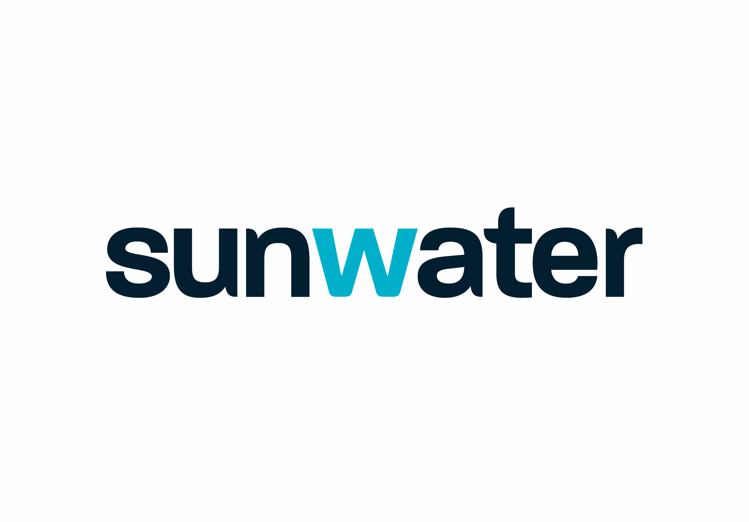 |
 |  | 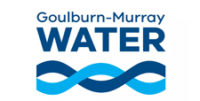 |
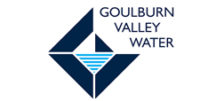 |
Often we are bound by confidentiality clauses which prohibit us from mentioning some of our client names.
We have worked with water companies on programs and interventions covering:
- Subcontractor management
- Safety on remote sites
- Team development
- Operational performance, integrated management, improvements in efficiency, productivity and safety
- Wellbeing, fatigue and stress management
- Coaching and mentoring
Our programs relevant to the water industry include:
- Safety Leadership Foundation Program
- BSB41419 Certificate IV in Work Health and Safety
- BSB40520 Certificate IV in Leadership and Management
- M.A.T.E.S
- Masterclass in Safety for Senior Leaders
- Subcontractor Management
- Incident Investigation
- Task Risk Assessment
Want to find out more? Visit our programs page or request our full course outlines
